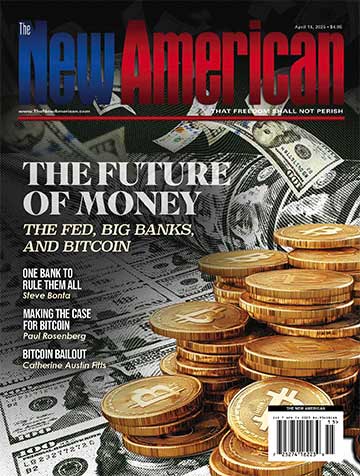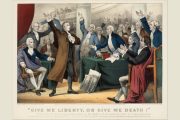
Twenty-five years ago this month, the Federal Communications Commission ended the “Fairness Doctrine,” which in the name of “fairness” infringed on the freedom of speech of radio and television stations, in violation of the First Amendment
Under the doctrine, which was imposed by the FCC in 1949, the holders of federal broadcast licenses were required to devote part of their air time to current issues of importance to the public interest and to air opposing points of view when requested. The stated goal was that broadcast licensees were to provide fair, honest, balanced and equitable time to controversial issues.
Implementation of the Fairness Doctrine raised serious concerns. Which issues were important to the public and how would those issues be determined? How was advocacy of a particular position to be segregated from simply reporting news? Which opposing point of view should be given equal time in cases where more than one opposing point of view exists?
But the biggest problem with the Fairness Doctrine was its infringement on freedom of speech — a right the Founding Fathers considered so fundamental that it is enshrined in the First Amendment to the U.S. Constitution: “Congress should make no law … abridging the freedom of speech, or of the press.” Newspapers were not subjected to a “fairness doctrine” requiring that the publishers cover certain subjects or give equal time to opposing viewpoints. Why should broadcast media be any different? Of course, radio and television did not exist when the First Amendment was written, but the development of new technology to spread political opinions does not alter the principle involved.
But not everyone detected the violation of the principle. The nebulous nature of federal licensing of broadcast stations on the supposedly limited broadcast spectrum made intrusion into the content of broadcasting seem less threatening than if the same restrictions were applied to newspapers or magazines.
In the 1969 case of Red Lion Broadcasting v. FCC, 20 years after the Federal Communications Commission promulgated the Fairness Doctrine, the Supreme Court upheld the FCC’s power to do so, but the court at the same time made it clear that the Federal Communications Commission was not required to have a Fairness Doctrine. Subsequent opinions, like the 1974 case of Miami Herald Publishing v. Tornillo, called into question the Fairness Doctrine when Chief Justice Burger wrote: “Government-enforced right of access inescapably dampens the vigor and limits the variety of public debate.”
In 1985, FCC Chairman Mark Fowler studied the Fairness Doctrine and the commission published a report acknowledging that the Fairness Doctrine violated freedom of speech and actually diminished public discussion of important issues. Two years later, in August 1987, the Federal Communications Commission, by a unanimous vote, decided to end the Fairness Doctrine, stating:
The intrusion of government into the content of programming … actually inhibits the presentation of controversial issues of public importance to the detriment of the public and the degradation of the editorial prerogative of broadcast journalists.
Dennis Patrick, who was FCC chairman at the time, noted:
We seek to extend to the electronic press the same First Amendment guarantees that the print media have enjoyed since our country’s inception.
Some in Congress opposed the decision almost at once, and although the Fairness Doctrine has not been applied since August 1987 the language implementing it was not actually removed until last year. Attempts have been made to codify the Fairness Doctrine into federal statute. President Reagan vetoed such legislation, and later President George H. Bush threatened a veto when similar attempts were made in Congress.
Democrats in Congress have introduced bills to create something like the Fairness Doctrine in the last decade. In 2005 Congresswoman Louise Slaughter of New York introduced the “Fairness and Accountability in Broadcasting Act,” which did not get out of committee. Senator Durbin of Illinois in 2007 stated that “it’s time to reinstitute the Fairness Doctrine.” In 2008 Speaker of the House Nancy Pelosi, when asked by Human Events journalist John Gizzi if she favored reintroduction of the Fairness Doctrine, answered “Yes.”
Senator Tom Harkin of Iowa stated in 2009 that “we gotta get the Fairness Doctrine back in law again … they are just shutting down progressive talk from one city after another. That’s why we need the fair — that why we need the Fairness Doctrine back.” Former President Clinton, a few days later, said: “Well, you either ought to have the Fairness Doctrine or we ought to have more balance on the other side, because essentially there’s always been a lot of big money to support the right wing talk shows.”
If efforts to impose the Fairness Doctrine by statute have failed, efforts to prevent the FCC from reinstituting the Fairness Doctrine regulations have failed as well. President Obama has publicly stated that he opposes the Fairness Doctrine, but no bill relating to the Fairness Doctrine has reached his desk for him to sign or veto.
The most troubling fact about those who favor a new Fairness Doctrine is the stated objective of countering a certain point of view (conservative) in a particular medium (radio). The clear intent is to suppress conservative talk radio by imposing onerous duties on radio station to provide liberal talk radio, which in the free market of ideas does not attract enough of an audience to justify programs today.
The First Amendment is clear on the matter, and the term “press” has historically been interpreted to be all forms of media communication with the public. Film, for example, was not foreseen directly by the Founding Fathers, yet no one has seriously suggested that the political or philosophical content of film can be regulated by federal bureaucrats. Curiously, in the Fairness Doctrine debate, proponents of a new statutory requirement that broadcast media be “fair” never suggest that network news or network broadcasting is overwhelmingly liberal, even though television has both a video and audio component and its audience is larger than the national radio audience.
In the 25 years since the Fairness Doctrine was repealed by the FCC, the variety of opinions available in the broadcast media, by almost any definition, has increased remarkably. This is what the First Amendment was intended to encourage. When the “press” meant simply newspapers, most of these periodicals were overtly partisan. Our Founding Fathers understood that publication “neutrality” was an illusion and that any effort to regulate expression of political opinion was dangerous. Do we grasp this today?




